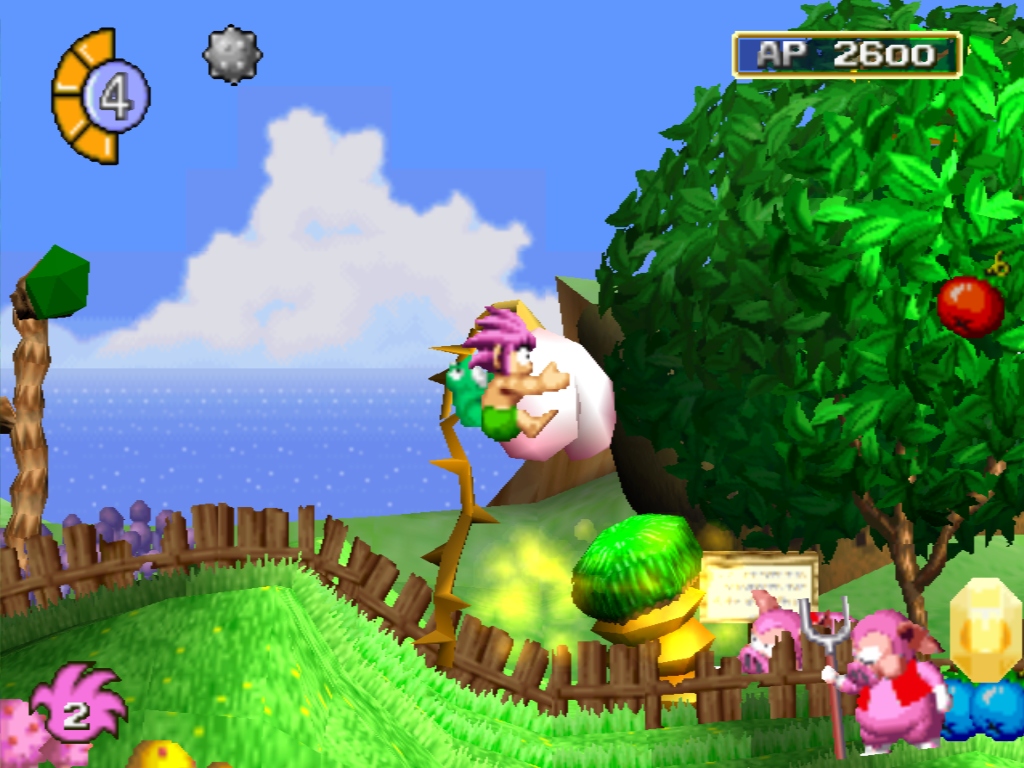

This is a decent if unspectacular game that collectors and mech fans might want to own. The action is competent and challenging in the classic arcade tradition, and sometimes that's enough.

But the game clearly had its fans - an enhanced version made it to the Sony Playstation in 1997, upgrading the audiovisuals but retaining the basic gameplay.
TOMBA PS1 HIDE AND SEEK FULL
Mad Stalker: Full Metal Force is remarkable primarily for its system requirements - most of the Arcade CD-ROM games for the PC Engine were ports of SNK coin-ops, and while this game takes advantage of the extra memory, it seems like it could have been squeezed onto a lower-spec configuration.
TOMBA PS1 HIDE AND SEEK SOFTWARE
Maybe that's why they're still around today, as Iacta, developing interactive TV software for set-top boxes. One of their staff members even published an AES (Audio Engineering Society) paper discussing the use of low-bandwidth audio on CD-ROM, an abstract of which can be read here. I appreciated that - the company took its products seriously, and while they didn't make a big splash in the game marketplace, they did contribute to the development of the art form.
TOMBA PS1 HIDE AND SEEK UPGRADE
They had, and when I explained the situation and asked if there was an upgrade price, they just sent me a new disc, free of charge, without asking for so much as a proof of purchase. I filed the disc away and forgot about it until a few years later, at which time I phoned Tiger Media to see if they had ever released a Soundblaster version. I messed around with the raw audio data a bit and was able to listen to some of it after correctly guessing the sample rate, but it wasn't the same as hearing the audio in synch with the game. Much to my chagrin when I got home, this edition was designed strictly for use with the Tandy 1000/2000 computers' audio hardware, so I was unable to play it on a system with a Soundblaster-compatible card. My original copy of Condor was bought at a Radio Shack, in the early days of CD-ROM when very few games took advantage of the medium. What I do remember about Tiger Media is that I was very impressed by their customer service department. From what I can find online, Murder Makes Strange Deadfellows is similar in style - it came out later, and apparently escaped my notice (or at least my memory) completely. This rigid structure quickly becomes repetitive, and I never finished the case. And it's not really an adventure game - it's more like The Manhole, with limited opportunities for exploration and interaction.

I own a copy of The Case of the Cautious Condor - we have to solve the case within a 30-minute time limit, but if we don't visit the right locations and talk to the right people to discover all the right details, then we have to start over. Neither of the Airwave Adventures seems to have sold particularly well - while the visuals and voice acting are nicely done for the era, the gameplay wasn't great even then, and the retro 1930s style may not have been appreciated by the core video game market in those pre- Bioshock days. Their products originally ran on the Japanese FM-TOWNS computer and Commodore's ill-fated CDTV system, but came to DOS PCs later on as the technology became available. To provide digitized, non-animated comic-book artwork and radio drama-style voice The company only ever produced these two games, using CD-ROM technology


 0 kommentar(er)
0 kommentar(er)
